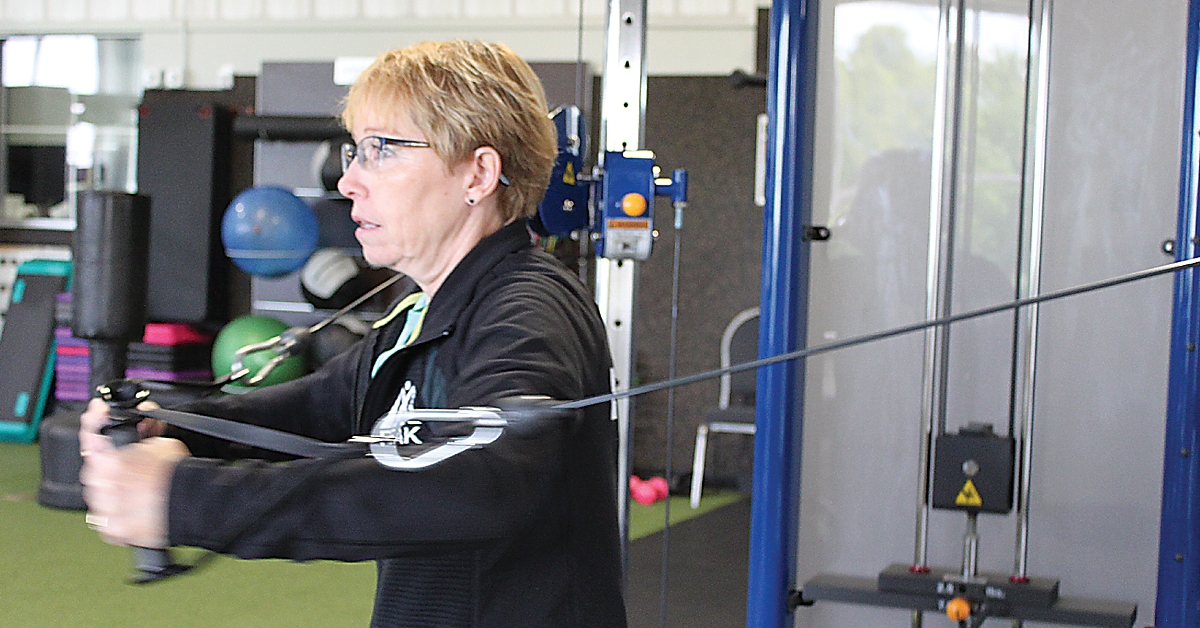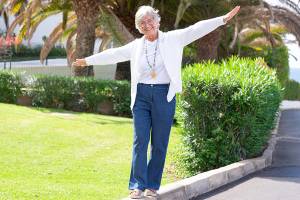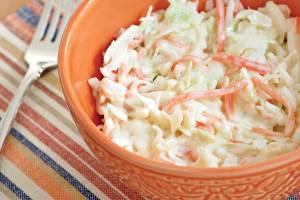By SUZANNE WARING
Beth Munsterteiger, 55, began her career as a trainer at HealthWorks in 1993. She has been facilitating exercise classes for seniors at the Peak Wellness and Health Center in Great Falls, Mont., for the last 16 years.
Developing routines for these exercise classes has become her forte.
In addition to leading members in exercise, she explains the merits in small doses.
“Physical activity and the right type of exercise will make all the difference to your life now and in the years to come,” she tells those who work out with her. “What we don’t realize is that exercise doesn’t — in fact, shouldn’t — be painful, but you do need to commit time to it. Exercise can be enjoyable.”
Munsterteiger teaches class members that physical activity isn’t the same as exercise. When you make the bed, walk repeatedly up and down stairs, mow the lawn, and work in the garden, you’re engaging in physical activities.
Relish Physical Activity
We should relish the physical activity of our daily lives.
Exercise, instead, includes repetitive, structured activity that tones different parts of the body and improves cardiovascular fitness. It can include swimming, bicycling, and classes you might participate in at a health club. Engage in both physical activity and exercise.
“Seniors can exercise at home, but caution should be undertaken that the right exercises be done for their age, body build, and injuries that they might already have,” she said.
“Exercise routines through home-use instruction may include exercises that are not appropriate for those 50 years of age and older, or those with permanent injuries. That is why a trainer-led class created for seniors is an excellent setting to undertake an exercise routine.”
Check Insurance Coverage for Wellness
She also tells those who are thinking about an exercise class to check whether their insurance pays for wellness activities, such as membership to a health club. Also, if there’s any question whether they should join an exercise class to consult with their physician.
Even if individuals are the right weight for their height and body structure, Munsterteiger stresses that it is important to look at the body’s composition. There may not be enough muscle in that weight. During an exercise routine created for seniors, individuals are building strength for mobility, agility, and balance that may prevent falls.
Balancing Active Daily Skills
Munsterteiger is on top of the research sponsored by AARP, indicating that among people 65 years and older, falls are the leading cause of injury deaths and the most common cause of nonfatal injuries.
Every 29 minutes, an older adult dies and every 15 seconds one is treated in an emergency room as a result of a fall. Each year in the U.S., nearly one-third of older adults experience a fall.
A fall can lead to a hip fracture, other fractures, or even brain injuries—which are difficult for seniors to overcome. Maintaining balance involves highly complex, precise coordination of responses, both mentally and physically. It is better to prevent falls through good balance.
“All of the exercises that we do with the Synrgy System that we use at the Peak lead to improved balance,” said Beth Munsterteiger. “The goal is functional fitness to meet the demand of ADL’s—Active Daily Living Skills—now and into the future.
Including exercise in your weekly life is a change in lifestyle. It needs to become part of your schedule,” she said.
As a class member who participates in the Synrgy exercises, you should be able to carry your grocery bags, walk up and down stairs without getting out of breath, maneuver uneven ground, and easily slide into and out of your vehicle, among other daily activities. Every health club has senior classes with its own system, but the outcomes are the same.
Walk for Strength
Munsterteiger is often asked whether walking each day replaces the need for an exercise class. “Walking is awesome,” she said, “but there is no resistance to challenge the muscles throughout the body. Include walking along with a core-strengthening exercise routine.”
“No pain is all gain,” she said. “Our goal is to be stronger by developing and working toward wellness because wellness doesn’t simply happen. Wellness is a life philosophy toward maintaining mental, physical, emotional, and spiritual stability.”
Friendship for Wellness
“Over the years, class members have become friends, which is an aspect of wellness. I have so much fun getting to know them and hearing their remarks,” said Munsterteiger.
“One time I offered to raise the exercise bench for a woman when she said it was too low. Wondering how she adjusted pillows at home, I asked, ‘What do you do in bed?’ With a sober look, she came right back with, ‘Well, that’s private’.”
“We do have fun, and we encourage new members to join us. We begin by learning one another’s names. Over the years, the group has gotten together for luncheons or to sample certain kinds of foods. Everyone wore black on my birthday when I turned forty,” she said.
“I have met people from all walks of life. One of the members had seen Hitler; another had a connection to the Titanic.”
If we fulfill the duties of caring for a home, we participate in physical activity, but once individuals add an exercise class, they find they have more energy, the body firms up, mental well-being improves, sleep is enhanced, and the body core is strengthened. When you leave a class, you should not be tired but should feel invigorated.
Doing nothing about exercise is deadly. Munsterteiger recommends participating in both physical activity and exercise as a part of each week. The rewards are great. MSN









